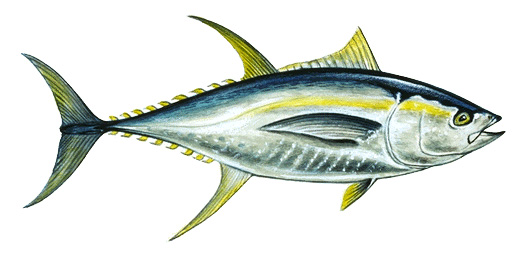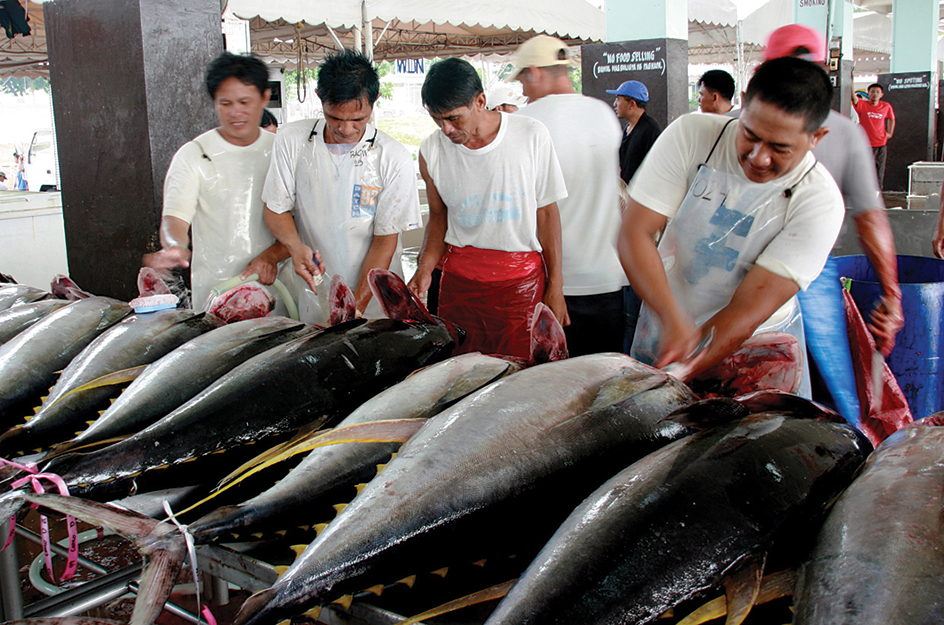Tuna is any of a group of fierce, swift ocean fish. Tuna meat ranks as a popular food in many countries, especially in North America, Europe, and East Asia. The meat is sold canned, fresh, and frozen. Tuna also serves as a leading game fish. Major commercial types include the albacore, Atlantic bluefin, bigeye, Pacific bluefin, skipjack, and yellowfin tunas. Indonesia and Japan rank among the leading tuna-fishing countries.

The largest tuna, the Atlantic bluefin, grows up to 14 feet (4.3 meters) long and weighs up to 1,600 pounds (730 kilograms). The smallest tuna is the bullet tuna. It grows up to 20 inches (51 centimeters) long and weighs up to 5 pounds (2.3 kilograms).
Tuna rank among the swiftest fish. The Atlantic bluefin can swim as fast as 45 miles (72 kilometers) per hour. Like other fish, a tuna has gills that take oxygen from the water passing over them. But unlike most fish, a tuna cannot pump water over its gills. Therefore, it must swim continuously in order to breathe.
Tuna live near the surface of temperate and tropical ocean waters. Their diet includes small fish, squid, and such crustaceans as crabs and krill. In summer, tuna in the Northern Hemisphere go as far north as Newfoundland and Norway in the Atlantic Ocean, and British Columbia and northern Japan in the Pacific Ocean. Tuna in the Southern Hemisphere go as far south as the Southern Ocean. Major fisheries operate in the Atlantic, Pacific, and Indian oceans, and in the Mediterranean Sea.

Tuna sometimes migrate long distances and can cross oceans or move from one ocean to another. One individual was tagged and released off Japan and then recaptured near Mexico. This fish had to swim at least 6,700 miles (10,800 kilometers) to reach its destination.
Tuna are caught in three main ways. In bait fishing, crews throw live bait overboard to attract the tuna and then catch them by hooks and lines attached to long poles. In long-lining, tuna are caught with a line that is up to 81 miles (130 kilometers) long and has over 3,000 shorter lines with baited hooks. Purse seining, the chief method of catching skipjack and yellowfin tuna, encircles the fish in large nets called purse seines. Fishing crews have trapped many dolphins in purse seines and accidentally killed them. Many countries now require the nets to have openings through which dolphins can escape. In addition, countries have laws restricting the purchase of tuna caught in nets that also kill dolphins. Numbers of several kinds of tuna have declined, mostly due to overfishing.
See also Fishing industry (Where fish are caught).
